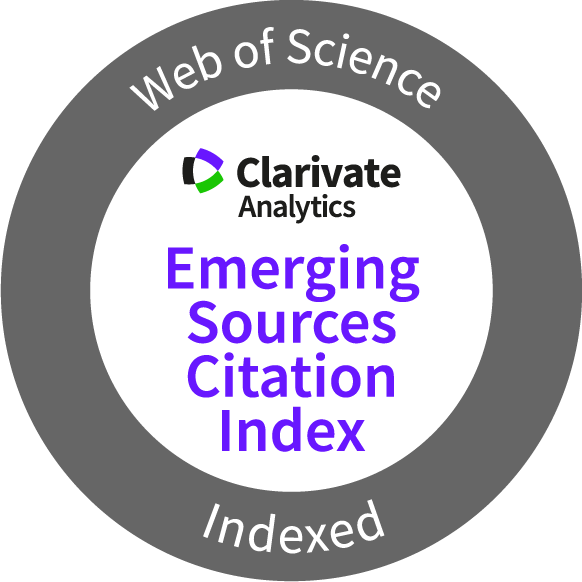Characteristics and Risk Factors of Diabetic Retinopathy Patients in West Java, Indonesia
Abstract
Diabetic retinopathy (DR) is the major microvascular complication of diabetes mellitus (DM) and responsible as the leading cause of vision loss among working-age adults. With the estimated DM cases reaching 578 million in 2030, public health systems are faced with challenges of increasing costs of implementation and maintenance of DR screening program in people with DM. This study aimed to describe characteristics and risk factors of DR among patients of a Primary Health Care Center in West Java, Indonesia. This was a cross-sectional study during the period of March 2021 until June 2022 on 1,080 participants. Among these participants with DM, 28.89% (25.16–33.12% [95% CI]) were classified to have DR. A total of 32.69% (28.14–36.71 [95% CI]) participants with DR had vision threatening DR (VTDR). The prevalence of DR in this study was higher in women (77.23%) with a mean age of 57.26 ± 9.17 and duration of DM of ≥5-years (56.01%), blood glucose level <200 mg/dL (63.79%), high systolic blood pressure (52.03%), high diastolic blood pressure (39.07%), normal BMI (55.5%), high waist circumference (43.7%), and high HbA1C (3.42%). A total of 1,041 (96.39%) participants were using antidiabetic drugs, and 9.63% of them were currently smoking. This study showed that diastolic blood pressure, abnormal abdominal circumference, and high HbA1C levels were more prevalent in DR and VTDR groups. The findings of this study represent the current characteristics of DR patients in West Java and can be used as a baseline or comparison data for other regions in Indonesia.
Keywords
Full Text:
PDFReferences
- Burton MJ, Ramke J, Marques AP, Bourne RR, Congdon N, Jones I, et al. The Lancet Global Health commission on Global Eye Health: vision beyond 2020. Lancet Glob Health. 2021;9(4):e489–551.
- Kemenkes RI. Hasil Riset Kesehatan Dasar Tahun 2018. Kementrian Kesehat an RI. 2018;53(9):1689–99.
- Saeedi P, Petersohn I, Salpea P, Malanda B, Karuranga S, Unwin N, et al. Global and regional diabetes prevalence estimates for 2019 and projections for 2030 and 2045: Results from the International Diabetes Federation Diabetes Atlas, 9th edition. Diabetes Res Clin Pract. 2019;157:107843.
- Kementerian Kesehatan RI. Infodatin tetap produktif, cegah, dan atasi Diabetes Melitus. Jakarta: Pusat Data dan Informasi Kementrian Kesehatan RI; 2020. formatnya buku
- Tan H, Wang X, Ye K, Lin J, Song E, Gong L. Prevalence and risk factors of diabetic retinopathy among Chinese adults with type 2 diabetes in a suburb of Shanghai, China. PLoS One. 2022;17(10):e0275617
- Tan GS, Gan A, Sabanayagam C, Tham YC, Neelam K, Mitchell P, et al. Ethnic Differences in the Prevalence and Risk Factors of Diabetic Retinopathy: The Singapore Epidemiology of Eye Diseases Study. Ophthalmology. 2018;125(4):529–36.
- Zhang G, Chen H, Chen W, Zhang M. Prevalence and risk factors for diabetic retinopathy in China: a multi-hospital-based cross-sectional study. British Journal of Ophthalmolog. 2017;101:1591–5.
- Cui J, Ren JP, Chen DN, Xin Z, Yuan MX, Xu J, et al. Prevalence and associated factors of diabetic retinopathy in Beijing, China: a cross-sectional study. BMJ Open. 2017;7(8):e015473.
- Jee D, Lee WK, Kang S. Prevalence and risk factors for diabetic retinopathy: The Korea National Health and Nutrition Examination Survey 2008-2011. Investig Ophthalmol Vis Sci. 2013;54:6827–33.
- Gupta P, Man REK, Fenwick EK, Aravindhan A, Gan AT, Thakur S, et al. Rationale and methodology of the population health and eye disease profile in elderly Singaporeans study [PIONEER]. Aging Dis. 2020;11(6):1444–58.
- Ahmed TM, Demilew KZ, Tegegn MT, Hussen MS. Use of eye care service and associated factors among adult diabetic patients attending at diabetic clinics in two referral hospitals, Northeast Ethiopia. Diabetes Metab Syndr Obes. 2021;14:2325–33.
- Sapkota R, Chen Z, Zheng D, Pardhan S. The profile of sight-threatening diabetic retinopathy in patients attending a specialist eye clinic in Hangzhou, China. BMJ Open Ophth. 2019;4(1):e000236.
- Kajiwara A, Miyagawa H, Saruwatari J, Kita A, Sakata M, Kawata Y, et al. Gender differences in the incidence and progression of diabetic retinopathy among Japanese patients with type 2 diabetes mellitus: a clinic-based retrospective longitudinal study. Diabetes Research and Clinical Practice. 2014;103(3):7-10.
- Sasongko MB, Widyaputri F, Agni AN, Wardhana FS, Kotha S. Prevalence of diabetic retinopathy and blindness in indonesian adults with type 2 diabetes. AJO. 2017;9394(17):30271–4.
- Rachapelle S, Legood R, Alavi Y, et al. The cost-utility of telemedicine to screen for diabetic retinopathy in India. Ophthalmology 2013;120(3):566–73.
- Nguyen HV, Tan GSW, Tapp RJ, Mital S, Ting DSW, Wong HT, et al. Cost-effectiveness of a National Telemedicine Diabetic Retinopathy Screening Program in Singapore. Ophthalmology. 2016;123(12):2571-80.
- Olafsdottir E, Andersson DK, Dedorsson I. 2019. The prevalence of retinopathy in subjects with and without type 2 diabetes melitus. Act Ophthalmol. 2019;92(2):133–7.
- Lian JX, Gangwani RA, McGhee SM, Chan CKW, Lam CLK, Wong DSH. Systematic screening for diabetic retinopathy (DR) in Hong Kong: Prevalence of DR and visual impairment among diabetic population. Br J Ophthalmol. 2016;100:151–5
- Wei J, Liu X, Xue H, Wang Y, Shi Z. Comparisons of visceral adiposity index, body shape index, body mass index and waist circumference and their associations with diabetes mellitus in adults. Nutrients. 2019;11(7):1580
- Valizadeh R, Moosazadeh M, Bahaadini K, dan Vali L. Determining the prevalence of retinopathy and its related factors among patients with Type 2 Diabetes in Kerman, Iran. Osong Public Health Res Perspect. 2016;7(5): 296–300.
- Ting, DSW, Cheung GCM, Wong, TY. Diabetic retinopathy: global prevalence, major risk factors, screening practices and public health challenges: a review. Clin Exp Ophthalmol. 2016;44:260–77.
DOI: https://doi.org/10.15395/mkb.v56.3412
Article Metrics
Abstract view : 618 timesPDF - 280 times

This work is licensed under a Creative Commons Attribution-NonCommercial 4.0 International License.

MKB is licensed under a Creative Commons Attribution-NonCommercial 4.0 International License
View My Stats







